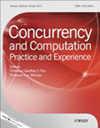Privacy Text Clustering Method Based on Burst Feature of Words
Abstract
Real-time detection of privacy-relevant events in social media faces two fundamental challenges: (1) cluster instability caused by sparse and noisy text data, which leads to center drift; and (2) poor event discernibility in traditional online clustering methods. These limitations severely impair effective privacy monitoring in dynamic social media environments. To address these challenges, we propose an innovative edge intelligence-driven framework that integrates adaptive burst word detection using wavelet-based signal analysis; spectral clustering of identified burst words to establish stable event anchors; and real-time incremental text clustering centered around these fixed anchors. We conduct a comprehensive evaluation on a dataset of 116 million COVID-19-related tweets and obtain the following results: Burst word identification accuracy of 86.28%; cluster purity of 0.875 (37% improvement over the baseline method); throughput of 3000 tweets per minute; and 78% reduction of irrelevant content through effective noise filtering. The key advantages of our approach include: Addressing the persistent cluster drift problem via burst anchoring centers; enabling efficient distributed processing via edge intelligence architecture; providing a practical and scalable solution for real-time social media monitoring; and establishing a new paradigm for privacy-aware event detection systems.

 求助内容:
求助内容: 应助结果提醒方式:
应助结果提醒方式:


